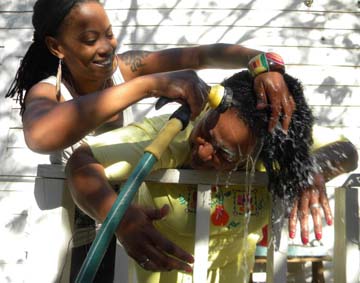 “When your hair is relaxed white people are relaxed, when your hair is nappy white people aren’t happy.”
“When your hair is relaxed white people are relaxed, when your hair is nappy white people aren’t happy.”
Comedian Paul Mooney joined black Hollywood actresses, scholars and entertainment industry insiders to comment on the state of black women’s hair in Chris Rock’s 2009 comedy documentary “Good Hair.”
In the documentary, Rock explores the great lengths to which black women will go to chemically straighten their hair or receive a desired hairstyle very unlike their natural hair. Rock shows women who spend $1,000 on a schoolteacher’s salary for hair extensions and explores the health risks associated with chemical hair relaxers used on everyone from young children to the elderly.
The term “good hair” is in reference to a grade of hair that is thought to be silky, straight, long and easy to manage. Many black women who have a naturally kinky, tight curl that is course and harder to style turn to chemical relaxers, hair extensions known as weaves, and high-heat styling tools to achieve “good hair.”
Women will pay a hefty price for upkeep and maintenance of this look. Weekly sessions in the hair salon to straighten hair with a pressing comb can cost customers $60 to $150 a pop. Weave hair, depending on the quality (human or synthetic), can range from $100 to upwards of $600 alone.
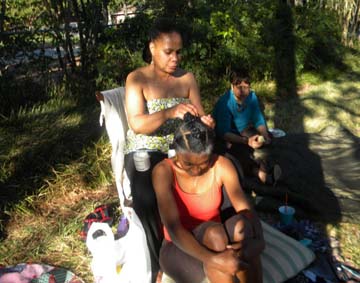 The process of putting in the extensions, also known as tracks, can take four to six hours depending on the style and can cost women $200. Due to the hefty costs, health risks of these styles, and changing preferences of black women, the natural hair movement has gained momentum both online and on television.
The process of putting in the extensions, also known as tracks, can take four to six hours depending on the style and can cost women $200. Due to the hefty costs, health risks of these styles, and changing preferences of black women, the natural hair movement has gained momentum both online and on television.
Daytime talk show “Dr. Drew’s Lifechangers” gave the natural versus relaxed hair discussion national attention by addressing the issue on a November 2011 episode. Dr. Drew invited Kim Coles, a black actress and natural hair advocate, to host a panel of black women who wear their hair in a variety of styles from weaves to natural. The women shared the various personal and societal reasons that affect how they wear their hair.
After a heated exchange between the panelists and even audience members, Coles ended the show with a message to black women about their hairstyling choices.
“I want to say that it all has to do with self-love ultimately, self-love and honesty,” she said. “I want us all to be honest about why we do what we do and then choose and rock whatever you want to rock.”
In 1991, Coles started wearing her natural hair in microbraids. Before her braids, she wore weaves and had her hair relaxed. In January, she decided to take the final step and wear her hair in its most natural curly state. Coles waited years to wear her hair completely natural because she didn’t know which products to use. Through online forums and YouTube videos promoting natural hair, Coles got the extra push she needed.
 “I have watched you young-uns accept your hair and yourselves and you gave me the courage and the product knowledge to take the leap to be completely authentic,” Coles wrote on black beauty site Afrobella.
“I have watched you young-uns accept your hair and yourselves and you gave me the courage and the product knowledge to take the leap to be completely authentic,” Coles wrote on black beauty site Afrobella.
Black women have turned to the web to create a natural hair community to empower each other and create support for those contemplating the “big chop.” The big chop is known as the first step to going natural and is a haircut that removes all processed or relaxed hair leaving most women with a short curly afro and only a few inches of hair.
Countless YouTube channels, such as Natural Veil, receive thousands of views on videos that share ways to style natural hair and the best products to keep curly hair healthy.
Journalist and author Linda Jones created her website, A Nappy Hair Affair, in 1998 to “raise awareness about cultural diversity and to promote self-appreciation.”
Jones gave the disclaimer that she doesn’t promote nappy hair at the detriment to wear other hairstyles, but she said that styles that reflect a European aesthetic are predominantly promoted.
“We are a very stylish people, so I see perms and haircuts that are works of art,” she noted. “I get that, but at the same time, we are running away from those things that we were born with.”
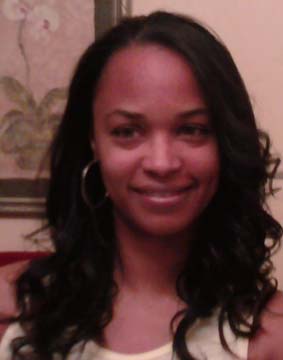 Jones and other natural hair advocates argue that going natural is a healthier lifestyle choice due to the harmful chemicals in relaxers. However, beautician Brandy Brown said that after styling hair for the past 21 years, she has seen otherwise.
Jones and other natural hair advocates argue that going natural is a healthier lifestyle choice due to the harmful chemicals in relaxers. However, beautician Brandy Brown said that after styling hair for the past 21 years, she has seen otherwise.
“The natural look can also be damaging,” contested Brown. “Brushing your hair while wet can damage the elasticity.”
Brown said that the most popular hairstyles for her black clients are straight or weaves with loose curls. She joked that celebrities set the tone for what is “in” or popular – and if a celebrity is doing it, it has to be good.
Some women don’t always go natural by choice. FOX journalist and Huffington Post contributor Tomika Anderson’s hair started falling out after she relaxed her hair to close to getting it colored. Anderson went natural and never looked back. She considers her curly afro her trademark. Anderson said she loves her natural hair, but she understands that it’s every black woman’s right to choose what works for her.
“I’m not going to knock the sister who has a weave,” said Anderson. “I think it is great to have a mixture of hair styles because we are a mixture. There isn’t one look for black women and so there doesn’t need to be one kind of black woman in the media.”









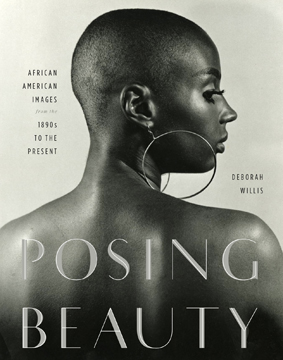 Modeled in a pose often seen in 18th century portraits, photographer Renee Cox sits on a silk, yellow, day bed with her back to the camera. Her head is turned to the side showing off her strong profile and a head full of dark brown and golden dreadlocks. Her posture is graceful, but strong and showcases her taught muscular back. Cox is nude and her rich caramel skin contrasts with the pale yellow cushions. She is wearing red heels and her slightly bent knees exaggerate her ample derrière.
Modeled in a pose often seen in 18th century portraits, photographer Renee Cox sits on a silk, yellow, day bed with her back to the camera. Her head is turned to the side showing off her strong profile and a head full of dark brown and golden dreadlocks. Her posture is graceful, but strong and showcases her taught muscular back. Cox is nude and her rich caramel skin contrasts with the pale yellow cushions. She is wearing red heels and her slightly bent knees exaggerate her ample derrière. 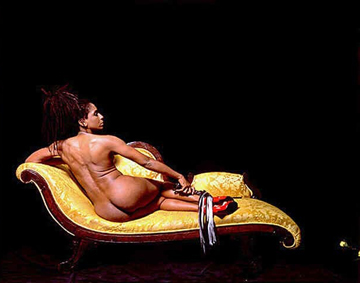 Baby Back by Renee Cox
Baby Back by Renee Cox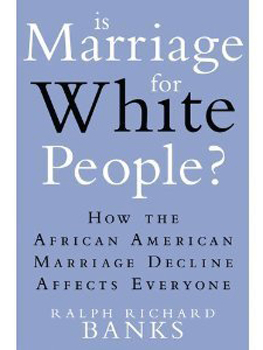 It almost begs the question “Is marriage just for white people?” Author Richard Banks tackles this issue in connection with interracial dating in his latest book, “Is Marriage for White People? How the African-American Marriage Decline Affects Everyone.”
It almost begs the question “Is marriage just for white people?” Author Richard Banks tackles this issue in connection with interracial dating in his latest book, “Is Marriage for White People? How the African-American Marriage Decline Affects Everyone.” 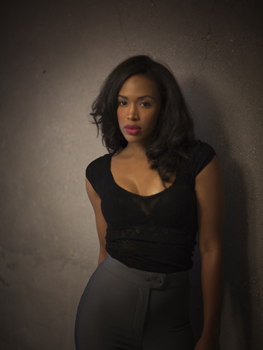 Actress and singer Shvona Chung remembered a time when she was on a lunch date with her ex-boyfriend and his mother. “My date had to correct his mother on the proper way to address someone from African-American descent, ‘No mom, no one says Negro anymore,’ [he said] as I sat in amazement,” Chung wrote on her Yahoo Shine blog.
Actress and singer Shvona Chung remembered a time when she was on a lunch date with her ex-boyfriend and his mother. “My date had to correct his mother on the proper way to address someone from African-American descent, ‘No mom, no one says Negro anymore,’ [he said] as I sat in amazement,” Chung wrote on her Yahoo Shine blog. 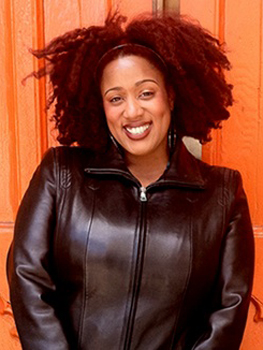 Thirty-five year old Fox news writer and freelance journalist Tomika Anderson didn’t hear Chung’s advice directly, but is following suit. Anderson has held editor positions at MTV News.com, Time, Inc. and was the senior editor of popular African American luxury and lifestyle publication UPTOWN magazine.
Thirty-five year old Fox news writer and freelance journalist Tomika Anderson didn’t hear Chung’s advice directly, but is following suit. Anderson has held editor positions at MTV News.com, Time, Inc. and was the senior editor of popular African American luxury and lifestyle publication UPTOWN magazine. 





